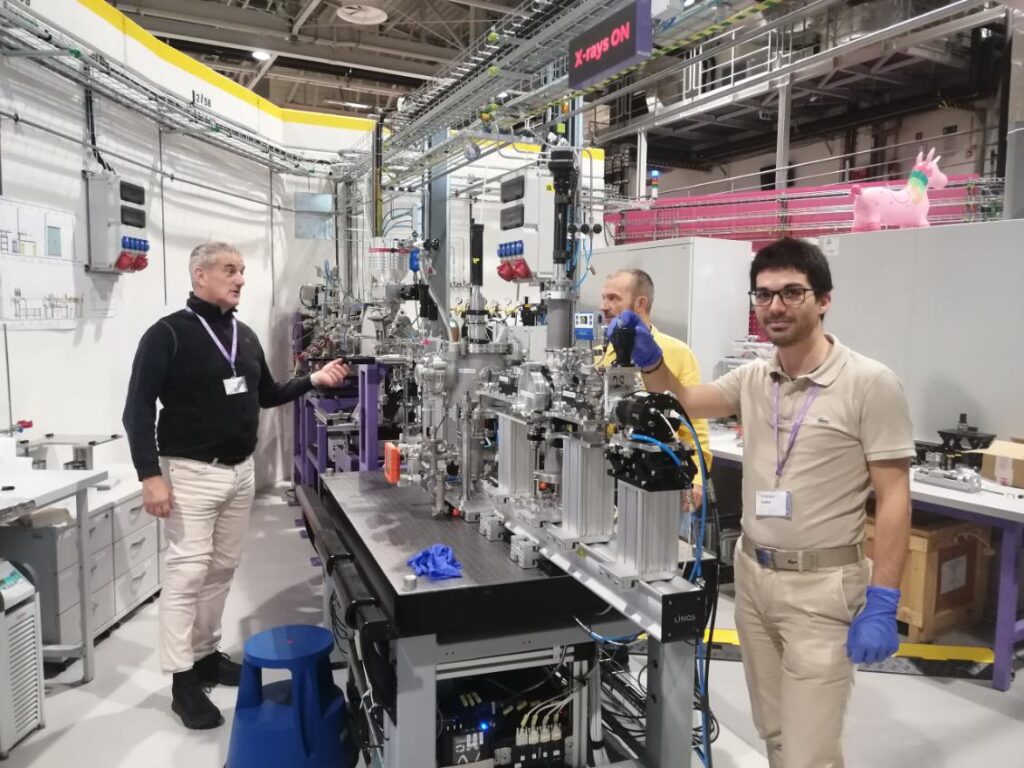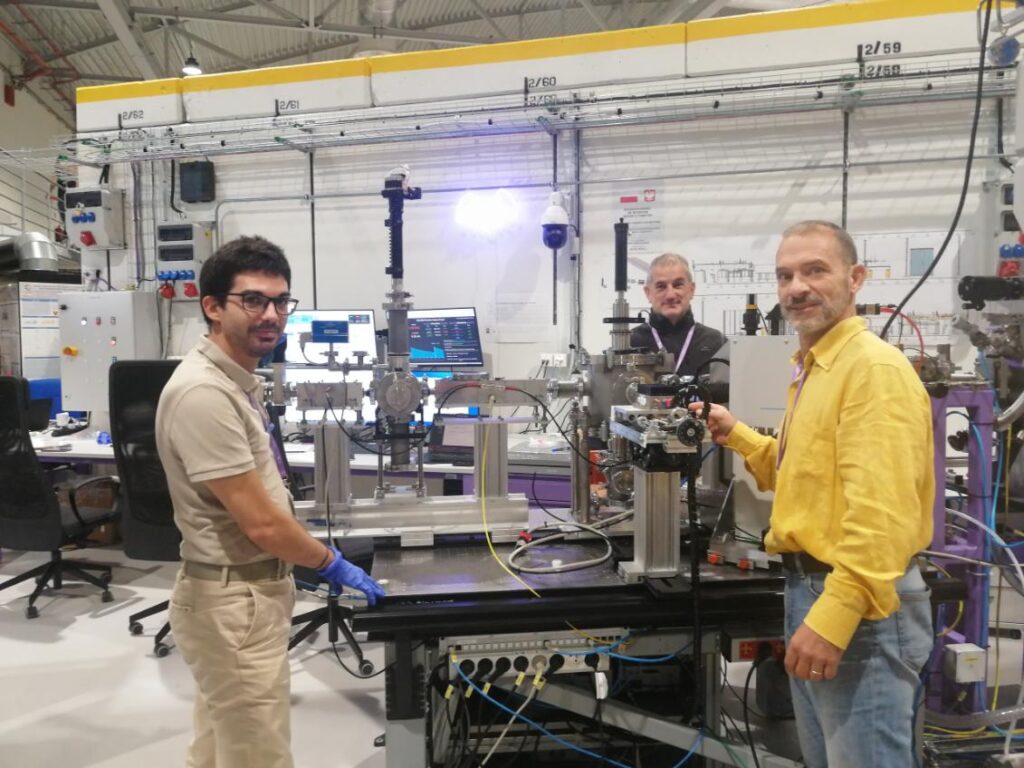Proposal title: FTIR and XAS studies on biomineralization and kinetics in selected foraminiferal species and their responses in relation to chemical stresses
Research infrastructure: SOLARIS / ASTRA
A research team composed of Giovanni De Giudici (University of Cagliari) and Carlo Meneghini (University of Rome TRE) conducted experiments at the SOLARIS synchrotron, joined by Cristian Ambu, who participated through the NEPHEWS Twinning Program, supporting young researchers in gaining hands-on experience with synchrotron techniques.
During their visit to the ASTRA beamline, the team focused on investigating the spectroscopic features of zinc (Zn) and phosphorus (P). “The main goal of our experiments at Solaris was to investigate the spectroscopic features of zinc (Zn) and phosphorus (P) at the ASTRA beamline during the same beamtime. We aimed to study zinc phosphate microminerals involved in biomineralization, as well as foraminiferal shells grown under environmentally stressed conditions. In this way, we hope to determine whether zinc phosphate forms in response to common metal pollution in marine environment,” explained Giovanni.

The broader scientific objective was to explore phosphorus’s role in the crystal growth of calcite biominerals capable of trapping atmospheric CO₂. Giovanni also highlighted the importance of NEPHEWS Twinning support: “We are deeply grateful to the Twinning NEPHEWS project for supporting Cristian Ambu – who recently began a PhD at the University of Cagliari – as this opportunity allowed him to start his synchrotron training and further develop his research in the near future.”
Cristian emphasized the careful approach to sample preparation that was critical for high-quality data: “Although the XAS beamline setup was the same for all samples, each material required specific preparation to obtain high-quality data. Our goal was to assess the role of zinc (Zn) and phosphorus (P) in biominerals. We analyzed a wide range of samples, including mineralized foraminifera shells, bivalve shells, plant tissues, and soil and river mineral precipitates. To ensure good results, we prepared the samples as powders or pellets — either pure or mixed with cellulose – with thickness adjusted according to the geometry used for X-ray absorption data collection (in transmission or fluorescence mode).”
He noted that these preparation choices were crucial for optimizing signal quality and minimizing self-absorption effects, ensuring reliable XANES data to identify the possible phases in which Zn and P occur. Cristian also shared a surprising moment from the experiments: “A particularly surprising moment occurred during one of the phosphorus analyses, when we detected an intense signal from yttrium (Y). Its absorption edge is close to that of phosphorus – as we initially interpreted the absorption peak – and this unexpected interference prompted us to reconsider the sample composition and plan further analyses to investigate this element more closely.”

Cristian reflected on the personal and scientific gains from the experience: “During my stay, I learned the fundamentals of how an XAS beamline operates, how the ASTRA beamline is configured, and what types of signals can be obtained from different samples. I also learned practical aspects of sample preparation and the procedures for mounting and aligning samples in the beamline. Moreover, I gained a better understanding of how data are acquired, how to assess spectral quality, and how to perform a preliminary interpretation of XANES spectra. I also became familiar with the software used for XAS data processing and interpretation, such as Athena and Hephaestus, as well as with tools like XAFSmass for calculating optimal sample concentration – skills that will be instrumental in my PhD research.”
The NEPHEWS Twinning program played a key role in facilitating Cristian’s participation: “The NEPHEWS program provided valuable support, covering part of the travel expenses and allowing me to stay more comfortably during the visit. It helped me manage costs for food and local transportation, which made the overall experience much smoother and more focused on the scientific work. The support also allowed me to dedicate more time to interact with the beamline scientists and discuss experimental strategies, which significantly improved the outcomes of our measurements.”
The SOLARIS staff was praised for exceptional guidance: “The SOLARIS staff – particularly the ASTRA team, Alexey Maximenko and Lulu Al Luhaibi – were exceptionally kind, responsive, and helpful. They guided us through the sample preparation and beamline operation procedures, explained the beamline setup and working principles, and provided prompt assistance whenever issues arose during data acquisition. Their willingness to explain each step of the process transformed the visit into a true learning experience rather than a purely technical one. We also had the opportunity to discuss potential future collaborations, laying the foundations for continued scientific exchange.”
Finally, Cristian encouraged other young researchers to take advantage of such opportunities: “I would strongly encourage other young researchers interested in synchrotron techniques to take advantage of the opportunities offered through the NEPHEWS Twinning program at SOLARIS. It is an excellent way to gain hands-on experience, collaborate with skilled scientists, and deepen one’s understanding of advanced analytical methods – which are increasingly essential for investigating processes at the microscale, particularly for natural and environmental scientists, and for linking chemistry to biological and environmental systems.”